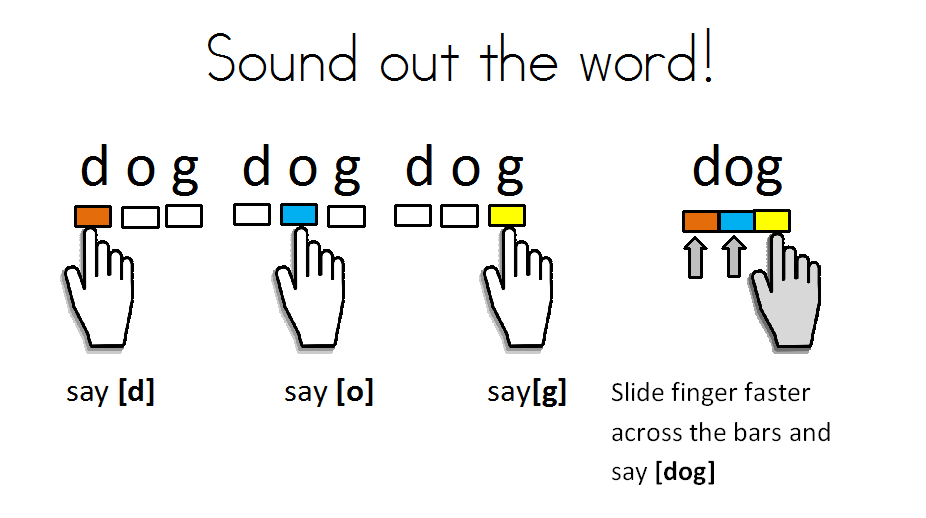RF.1.3.B.i: Beginning to Decode VC and CVC Words by Blending Individual Sounds, and then Recoding (e.g. /m/ /a/ /t/, mat)
Skill
RF.1.3.B.i: Beginning to Decode VC and CVC Words by Blending Individual Sounds, and then Recoding (e.g. /m/ /a/ /t/, mat)
Standard
CCSS.ELA-LITERACY.RF.1.3.B: Decode regularly spelled one-syllable words.
Description
- Mastery: Student segments each sound correctly before reading the whole word correctly (sound by sound blending).
- Acquiring: Student correctly segments each sound before reading the whole word. Student may make mistakes when recoding individual sounds into the word.
Probes
Use DIBELS NWF. Run item level analysis (Now What? Tools).
Activities and Resources
Small Group Instruction – Direct Instruction
P.034 Encoding and Decoding Vowel Stars
P.035 Encoding and Decoding Word Steps
P.036 Encoding and Decoding Letter Cube Blending
Introduce Sounding Out (Small Group)
Sounding Out Accuracy (Small Group)
Alien Word Game (Small Group)
Holiday Relay (Small Group)
Blending – Be the Sound
Blending – Picture Puzzles
Blending -Slip and Slide Wordsplash
During Transition
Word Swatter Game
Blending song -eg word families
Blending song -an word families
Blending song -it word families (*apply concept with continuous first sounds)
Reinforce Skills/Independent Work Time – Independent/Small Group Center Activity
P.036 Letter Cube Blending (Small Group, w/ Partner, Independent)
P.034 Vowel Stars (Small Group, w/ Partner, Independent)
CVC Words
First Step Reading Videos
2 letter blending A start at 0:38
2 letter blending E start at 0:35
2 letter blending I start at 0:35
2 letter blending O start at 0:38
2 letter blending U start at 0:35
Display (e.g. Anchor Chart):
 |
 |
| *Apply this strategy with words that begin with continuous sounds. Source: Reading Strategies |
Source: Letterland |
Considerations & Reminders
- When teaching students to decode words, teachers should begin with sound by sound blending. As students become more familiar with letters and sounds, teachers should move onto onset-rime (next skill), and then whole word blending so that students can begin to build whole word reading.
- Teachers should be very careful to correctly pronounce letter sounds and not inadvertently add the schwa sound – adding the schwa sound makes it more difficult for students to blend sounds into a whole word.
- As students get better with sound by sound blending, encourage them to silently say the sounds (whisper) or say them in their head, and then just say the whole word out loud.